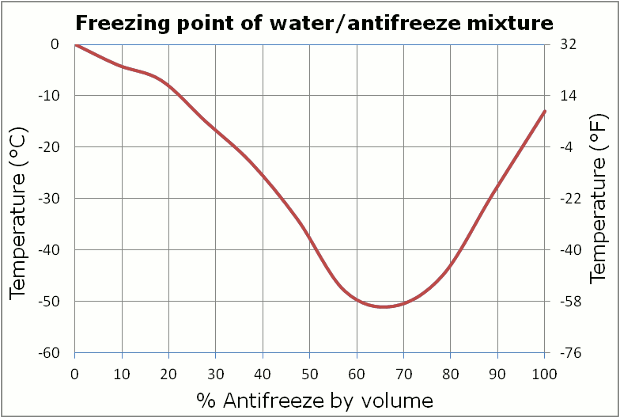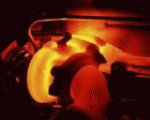Leaderboard
-
in all areas
- All areas
- Marker
- Events
- Event Comments
- Files
- File Comments
- File Reviews
- Images
- Image Comments
- Image Reviews
- Albums
- Album Comments
- Album Reviews
- Blog Entries
- Blog Comments
- Topics
- Posts
- Cummins Articles
- Cummins Article Comments
- Cummins Article Reviews
- Vendors
- Vendor Comments
- Vendor Reviews
- Ads
- Ad Comments
- Ad Reviews
- Policies
- Policy Comments
-
Custom Date
-
All time
December 14 2009 - July 24 2025
-
Year
July 24 2024 - July 24 2025
-
Month
June 24 2025 - July 24 2025
-
Week
July 17 2025 - July 24 2025
-
Today
July 24 2025
-
Custom Date
08/13/2016 - 08/13/2016
-
All time
-

dripley
Retired Staff3Points11,788Posts
Popular Content
Showing content with the highest reputation on 08/13/2016 in all areas
-
Questions after coolant change
2 pointsNothing! There is no heater control valve in this system. The engine coolant flows through the heater core when ever the engine is running. This is way it is important that the blend door functions properly. . Yes it can. I've flushed my radiator a few times over the years and filled it through the radiator with no problems. A 50/50 mix is good to -34°F. A max mixture of 65% anti-freeze to 35% water will have a freeze point of -60°F. Increasing the mixture of anti-freeze to water will raise the freeze point.2 points
-
Quadzilla Adrenaline V2 Testing
2 pointsFirst long trip with the tuning netted a ~2 mpg improvement. Best ever was 24.7. that was stock injectors and light AT type tires. When I changed tires to the much heavier MT tires I have now, my best went down to 22mpg with those tires. Just did a run with heavier tires and the 7 x.009 injectors and netted 24.4 mpg. There is some more to be gained as my prior best numbers where 100% highway, this run was not and some stop and go.2 points
-
Questions after coolant change
1 pointThose wigglers as you call them will let the air thru. From my understanding they are there to always allow some coolant flow. That being said they will let the air thru also. Like @IBMobile says about the overflow bottle, if the engine needs it, it will be there, if it does not, it will be there.1 point
-
Quadzilla Adrenaline V2 Testing
1 pointOne is Bluetooth one is wifi. The Bluetooth works with Android devices the wifi works with Apple.1 point
-
Questions after coolant change
1 pointAppreciate that info on the heater. I have never seen a control valve on the heater but it seems most folks tell you to run during a flush. I never saw a need to and have not. What ever my mix is I am good to -30* or so and dont think I will be seeing any where near that. @leathermaneod if you just filled from the radiator with the t stat removed it will just come up and run out of the opening as it fills the engine. That is the way I have done most of my other vehicles over the years. This is the first vehicle I have ever done thru the t stat opening and never noticed any difference doing it either way. Absolutely NOT.1 point
-
Questions after coolant change
1 pointDon't worry about that. If it's need it will be there and if it's not need it will still be there.1 point
-
Questions after coolant change
1 pointDid you run the heater? A good bit of fluid can get stuck in the heater I wouldn't worry about the ratio, I am never exact with it and it is fine.1 point
-
Truck shuts off but starts back up
I think he said it shuts down on its own without warning, then like something has to cool off, wait a few seconds or minutes to fire it back up with the key again.1 point
-
to buy or not to buy.
1 pointI would say so at $41k for asking price. I would be looking up all the damaged parts and labor rates for the repair of said problems then create a counter bill against the dealers asking price. Then get him to come down.1 point
-
Drum brake adjustment
1 point@KATOOM this old truck seemed like it was biased 80/20 or more toward the front. When I tied the valve back I noticed an immediate difference when I backed out of the shop. I drove quite a ways on a gravel road just to see if the rear was going to be over sensitive or lock up.. it feels more like 60/40 now and The fronts will lock up before the rears. I think in my case disabling the valve is a good thing.1 point
-
AC not quite as cold
1 pointI never went to anyone for a price. I pretty much made my mind up a while back to do it myself. Thats why I bought the vac pump and gauges. I had to replace the high pressure line and the drier. I replaced the evaporator a while back. When i had the ac serviced a good while back they knew there was a small leak somewhere and best they could figure it was in the evaporator. They told me that would cost about $900 due to the dash having to come out. That was out of my budget and I replaced it myself along with the dash pad and heater core. The evap was the leak and I had the fluorescent green oil in the hvac box. This is what I have in the repair parts $70 high pressure line, drier, gasket kit $30 freon $50 evaporator I did not use Mopar replacements. 4 Seasons at Rock Auto. Hope they last. tools $50 gauges $150 vacuum pump $10 misc total of $360 labor was quite a few hours of my time. A lot of that was learning since I had never messed with ac before except squirting in a little freon here and there. The last time anyone serviced my ac it cost me about $180 for the freon charge and leak hunting. Still think I came out good on the deal and now I have the tools to do it again. Pretty sure the wifes car has a leak and it will have to be done next year.1 point
-
AC not quite as cold
1 point1) It is a testing rpm from the factory manual. They didn't pick it from science completely but a way for the technicians to get similar results everytime they tested. (remember that was a guideline for hundreds of technicians doing it all over the country.) Going down the highway at 2000 rpms, it probably will lock and unlock occasionally. Some cars you can feel this (my honda is a prime example.... no guts and less guts when compressor running.) (our trucks we notice the alternator more than the compressor, due to the load of the grid heaters lol.) once settled down, I would not expect to have it happen more than once every few minutes. If it begins happening more than that, I take it off of MAX for a few minutes. It happens to me more than most people as I try and run a bit lower suction pressure (running the risk of freezeup) for a potentially lower duct temperature. but sometimes I don't notice or forget, and freeze the evaporator up... (have not on the dodge yet, but one of my suburbasaurus is wicked for that....) 2) YES. when the low side pressure is that low, its physical temperature is nearly the theoretical temperature. Any pressure below 28 is basically guaranteed to create ice. (this is why the low limit of the low side pressure switch drops the compressor out at 23 and doesn't let it re-start until 38 or so.) 3) The MAX setting changes nothing about the actual air conditioning. It re-routes the duct work inside the cab to "recirculate" the air we have cooled. (it brings in NO outside air) While we are testing, we want the evaporator to do WORK. There is very little work involved cooling already cool air.... so the AC system doesn't really know what to do, you may not get all the vapor/liquid refrigerant to turn to a vapor... you don't get the proper phase change and heat transfer going on. etc... in other words it will make your pressures act a bit funny. So I think for where you are at, you will get better pressure results using more outside air. (Max setting in daily use is a must for you if you live in a humid area... you will NEVER be happy if the AC has to constantly remove the water from outside air..... there is too much water stealing your potentially cool air.) HTH Hag1 point
-
Truck shuts off but starts back up
I was going to ask the same question.....or assume the truck is haunted. If I understand the situation, it sounds like the truck simply doesn't like to re-start not long after shutting off when the engine is at full operating temperature. Correct? If so, we call that a "hard hot start". If this is the problem then a few questions: Has the VP been replaced? What fuel pump are you using? Whats the running fuel pressures? And just to make sure.....this ONLY happens when the engine is at full operating temperature?1 point







